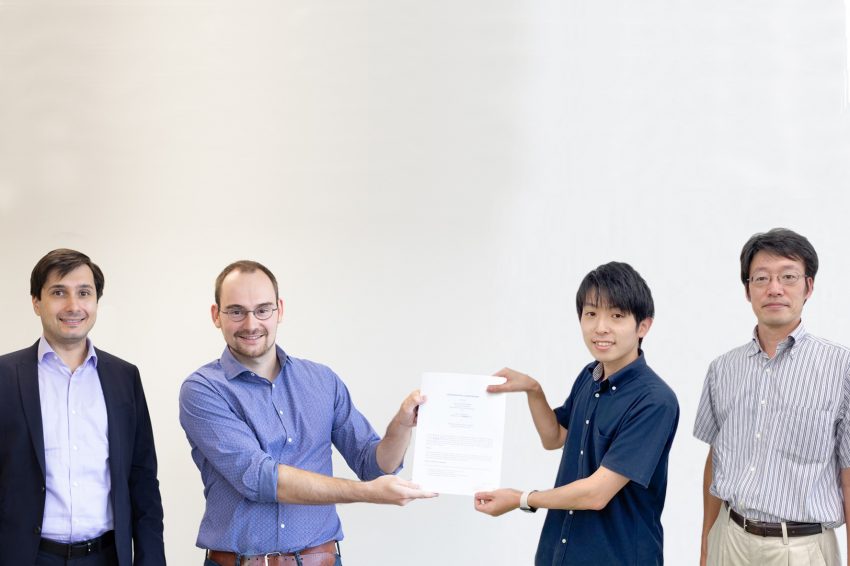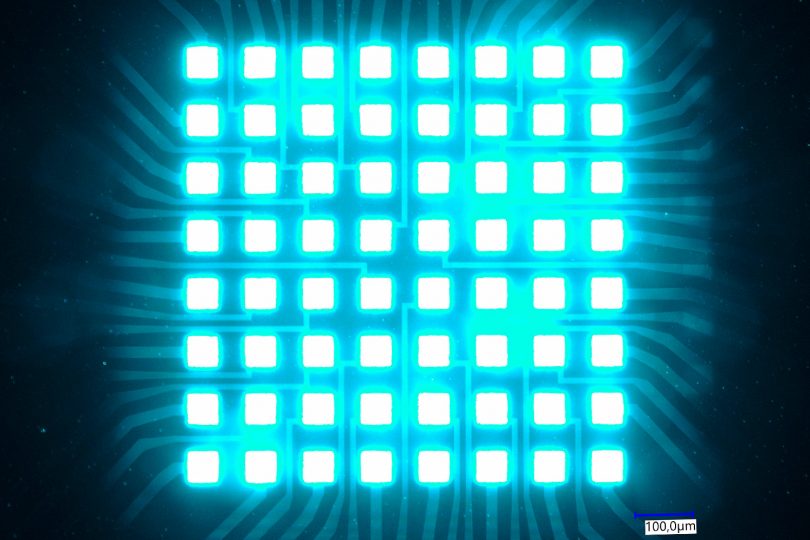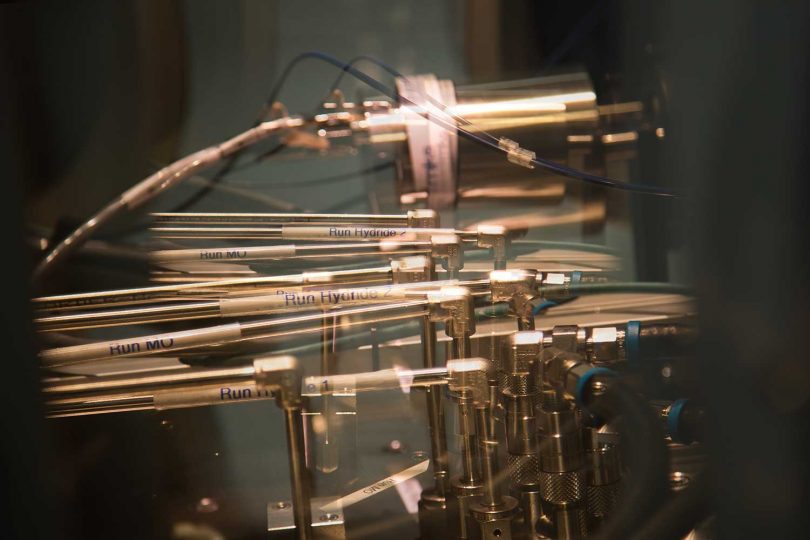Tokyo and Braunschweig conduct joint research on qubit control Quantum computing collaboration between the Institute of CMOS Design and Keio University
How do you control qubits, the computing unit of quantum computers? According to the current state of research, in a way that’s definitely too space-consuming and too warm. In order to become more space-saving and cooler, the Institute for CMOS Design from the core research area Metrology of the Technische Universität Braunschweig and Keio University in Japan have now joined forces with a Memorandum of Understanding. Thus, for the Lower Saxony Quantum Alliance around the Cluster of Excellence QuantumFrontiers and the Quantum Valley Lower Saxony (QVLS) a new facet is created.

United over a distance of 9,000 kilometers via photomontage: (from left) Braunschweig scientists Professor Vadim Issakov and Peter Toth, together with their colleagues Shuya Nakagawa and Professor Hiroki Ishikuro Image credits: Max Fuhrmann/TU Braunschweig and Shuya Nakagawa
Quantum computers like it cold: So far, the most reliable ion-trap-based quantum computers run at 4 Kelvin, which corresponds to a temperature of about minus 269 degrees Celsius. If the temperature rises, the qubits, the sensitive computational units of the quantum computer, lose their stability. They become faulty and several other qubits must step in to iron out the error. When some of these become faulty again, the game starts again. Stability, or deep-freezing, is therefore the top priority for smooth operation.
A destabilizing factor is currently the control of the qubits. Until now, each individual frozen qubit has been connected to the room-temperature controller via a cable. First of all, this tangle of cables takes up a lot of space. But much more important is the fact that each contact has to transfer energy and thus heat. The concept could therefore hardly be transferred from existing quantum computers to new models with a large number of qubits. These would not only be incredibly large, but also no longer cold enough for stable qubits due to the many heat supply lines.
The right chips for many qubits
Both the Institute for CMOS Design at the TU Braunschweig and Keio University in Japan want to solve the scaling brake of the control cables with chips. If it is possible to design a chip that directly controls the qubits at minus 269 degrees Celsius, only one cable is needed: precisely at this chip. For this task, the two institutes want to research and teach together in the future.
The partnership between the two institutes combines two necessary areas of expertise for the upcoming chips. The Japanese team around Professor Hiroki Ishikuro has already gained a lot of experience with low-power analog and mixed-signal circuits. These circuits try to consume as little power as possible through high efficiency. In the quantum computer, such chips would therefore emit comparatively little heat. In contrast, the Braunschweig team led by Professor Vadim Issakov is experienced in circuits at high frequencies. Only such chips can perform the control of qubits at all. “Our two research groups bring together what could make quantum computers more scalable in the future. We will then have many times more qubits under the hood without an excessive increase in the size of the system,” says Professor Vadim Issakov.
Partnership on multiple levels
Already on November 1, 2021, the signed Memorandum of Understanding will be followed by the first visit: Shuya Nakagawa, a Japanese PhD student, will come to the TU Braunschweig for six months, followed by Peter Toth from the Institute of CMOS Design, who will spend half a year in Japan in 2022. In addition, a requested DAAD funding is supposed to secure further exchange for the next two years. This would allow two German master’s students to travel to Japan and three Japanese students to Germany. In addition, the two professors will then give an annual block lecture at the other institute. Through the many bridges, the cooperation should thus be consolidated in the long term.
The German-Japanese exchange also benefits the collaborative projects to which the scientists and students contribute. Professor Vadim Issakov: “Professor Ishikuro’s group is involved in the Japanese program “Moonshot“, for example. From our point of view, however, the Cluster of Excellence QuantumFrontiers and the Lower Saxony Hub for Quantum Technologies, the Quantum Valley Lower Saxony (QVLS), stand out. This is because the chips for qubit control have a clear application goal: they are to help make the QVLS quantum computer, which will be created by 2025, scalable.”


